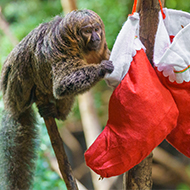Bees suffering with a prior infection are less likely to manage to forage for food during a heatwave than those without, a study has revealed.
The global research project, led by the Pennsylvania State University (Penn State), aimed to study how extreme heatwaves might affect the host-pathogen relationship between solitary bees and a protozoan pathogen.
The researchers investigated two species of solitary bees (Osmia cornifrons and Osmia lignaria) and the protozoan pathogen, Crithidia mellificae.
Solitary bees make up over 90 per cent of the approximately 4,000 species of bees in North America, and therefore contribute greatly to the pollination of crops.
However, the researchers discovered that solitary bees which had prior infection with the pathogen were less likely to forage for food when exposed to extreme heat.
If bees don’t forage and don’t eat, they don’t pollinate crops, which could have larger implications to food security and the global economy.
To investigate what they call ‘thermal boldness’, the researchers placed the bees in a tunnel which separated them from a meal of sugar water and pollen with a chamber with temperatures alike to a summer heatwave.
They found that bees which had previously been infected with the pathogen were far less tolerant of heat, and were therefore less likely to pass through the chamber to reach the food.
While healthy bees could tolerate temperatures of 109.4 degrees Fahrenheit, those which had been infected could only tolerate temperatures of 98.6 degrees Fahrenheit.
Although the pathogen itself was marginally affected by the heat, it was the host that suffered the most from the high temperatures.
The discovery has raised further discussion about how climate change and extreme weather might impact the pollination of crops.
Solitary bees, considered to be a large contributor towards pollination, live for roughly a year and have a high foraging capacity, however they are only active outside of their nests for two to four weeks.
This means that a short heatwave of three or four days can restrict their efficiency for a quarter of the time they are outside, affecting their ability to mate, pollinate and produce offspring.
Mitzy Porras, a postdoctoral researcher in Penn State’s College of Agricultural Sciences and lead author of the study said: “We are now experiencing the highest temperatures in recorded history,
“These heat waves are lasting three, or even four days, which is a long period of heat tolerance for bees. Then, when you combine that with prior infection from a pathogen, we’re looking at two factors that can severely negatively impact pollinator populations.”
She added: “Climate change is not just impacting species; it is impacting the relationships between species and that could have huge implications for human health and the planet as a whole.”







